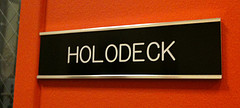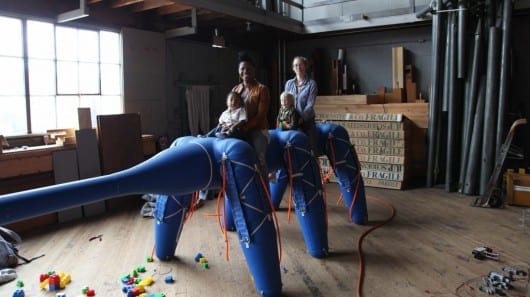
Hologram technology has been steadily evolving
From training sessions to romantic interludes, the holodeck aboard the U.S.S. Enterprise provided virtual environments for both work and play in “Star Trek: The Next Generation.”
On Earth, hologram technology has been steadily evolving in the 24 years since that series debuted. A full “Star Trek” holodeck experience – in which users not only can perceive a virtual reality but also interact with it using all of their senses – is still out of reach of current technologies. However, the intersection of holograms with other virtual reality advancements is bringing aspects of the holodeck closer to life than ever before.
“This is a very active field right now. We are on the brink of something,” said Pierre-Alexandre Blanche, an assistant research professor in optical sciences at the University of Arizona, who works on holography.
The modern optical hologram has been around since the early 1960s, when lasers were developed and researchers were able to record laser light as it scattered off objects and to reconstruct it in a different place. The images were small, however, because there wasn’t enough bandwidth to recreate the images at any significant size.
Modern computing has solved some of those problems, and it has been accompanied by advances in optics. Blanche’s team is taking some of the burden off the computer and putting it on the optics: The researchers are using a new type of polymer to display the holographic pixels, or hogels. Special lasers pattern the hogels onto the polymer and then keep updating the hogels so the image appears in near real-time.
Currently, the researchers at the University of Arizona are able to reload an image about every two minutes, but they are working toward 30 images per second, the same number of frames that make up one second of video. That sort of leap will require much better laser technology, said Blanche.
Other groups, including MIT, which pioneered advances in holography, are also working on the cutting edge of the field. Holografika, a Hungarian company, has commercial 3-D holography patents and is refining the resolution of images.
“We are all improving different things,” said Blanche. “And it will be totally different than what we know right now.”
Holography is expected to make huge inroads in the entertainment field, where 3-D technology already has become mainstream. Unlike 3-D, holograms require no special glasses or any other equipment and can be viewed from any angle. There are also military and medical applications, such as 3-D images of MRIs.
But even a perfect, life-size hologram would fall far short of the “Star Trek” holodeck experience, which offered a complete (and sometimes addictive) virtual reality.
“Holograms would simply create more authentic visuals,” said Alan Chalmers, professor of visualization at the International Digital Laboratory at the University of Warwick in England. “The human still needs all of the senses to accurately simulate reality.”
Chalmers is working on “real virtuality,” which includes inputs to all five senses to create a more comprehensive experience. His team is working on both capturing and modeling all of the inputs to recreate real-world scenarios.
Read more . . .
Bookmark this page for “Holodeck” and check back regularly as these articles update on a very frequent basis. The view is set to “news”. Try clicking on “video” and “2” for more articles.








